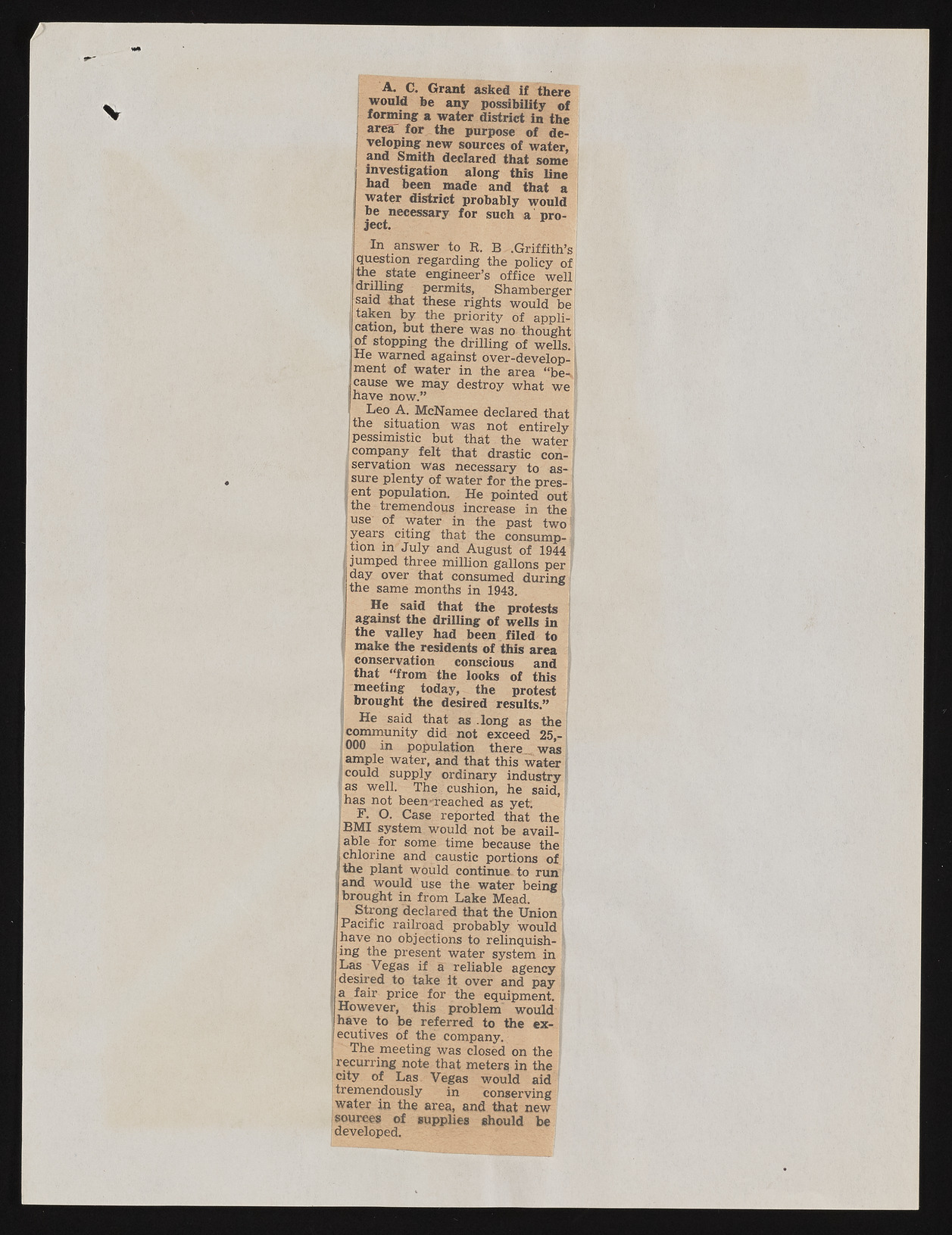Copyright & Fair-use Agreement
UNLV Special Collections provides copies of materials to facilitate private study, scholarship, or research. Material not in the public domain may be used according to fair use of copyrighted materials as defined by copyright law. Please cite us.
Please note that UNLV may not own the copyright to these materials and cannot provide permission to publish or distribute materials when UNLV is not the copyright holder. The user is solely responsible for determining the copyright status of materials and obtaining permission to use material from the copyright holder and for determining whether any permissions relating to any other rights are necessary for the intended use, and for obtaining all required permissions beyond that allowed by fair use.
Read more about our reproduction and use policy.
I agree.Information
Digital ID
Permalink
Details
Member of
More Info
Rights
Digital Provenance
Publisher
Transcription
A. C. Grant asked if there would he any possibility of forming a water district in the areaT for the purpose of developing new sources of water, and Smith declared that some investigation along this line had been made and that a water district probably would be necessary for such a project. In answer to R. B .Griffith’s question regarding the policy of the state engineer’s office well drilling permits, Shamberger said that these rights would be j taken by the priority of appli-j cation, but there was no thought of stopping the drilling of wells. He warned against over-development of water in the area “be-, cause we may destroy what wei have now.” Leo A. McNamee declared that the situation was not entirely pessimistic but that the water ! company felt that drastic con-; • servation Was necessary to as- I sure plenty of water for the pres- ; Sent population. He pointed out | the tremendous, increase in the I use of water in the past two I years citing that the consump- . Ition in July and August of 1944 | jumped three million gallons p er) I day over that consumed during the same months in 1943. j He said that the protests • against the drilling of wells in | the valley had been filed to ! make the residents of this area conservation conscious and , that “from the looks of this jj meeting today, the protest i brought the desired results.” i He said that as .long as the community did not exceed 25,- 000 in population there was ample water, and that this water' S could supply ordinary industry fas well. The. cushion, he said, f has not been "reached as yet; F. O. Case reported that the ;BMI system would not be available for some time because the {chlorine and caustic portions of I the plant would continue to run j and would use the water being I brought in from Lake Mead. 1 I Strong declared that the Union j Pacific railroad probably would ; I have no objections to relinquish- S. l ing the present water system in I Las Vegas if a reliable agency j desired to take it over and pay | a fair price for the equipment. ' However, this problem would have to be referred to the ex-j ecutives of the company. The meeting was closed on the I recurring note that meter? in the city of Las Vegas would aid tremendously in conserving water in the area, and that new sources of supplies should be 1 developed.

